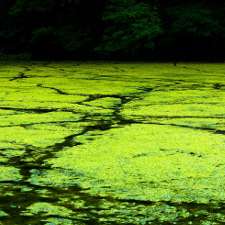Harnessing algae for the creation of clean energy

Researchers at Tel Aviv University have revealed how microalgae produce hydrogen, a clean fuel of the future, and suggest a possible mechanism to jumpstart mass production of this environmentally-friendly energy source. Their results have been published in back-to-back studies in Plant Physiology and Biotechnology for Biofuels.
The research was led by Dr. Iftach Yacoby, head of TAU's renewable energy laboratory, and Rinat Semyatich, Haviva Eisenberg, Iddo Weiner and Oded Liran, his students at the School of Plant Sciences and Food Security at TAU's Faculty of Life Sciences.
Researchers in the past believed that algae only produce hydrogen in the course of a single microburst at dawn lasting just a few minutes. But Dr. Yacoby and his team used highly sensitive technology to discover that algae produce hydrogen from photosynthesis all day long. Armed with this discovery, the team harnessed genetic engineering to increase algae's production of this clean energy source 400 percent.
Increasing algae's output of hydrogen
Laboratory tests revealed that algae create hydrogen with the assistance of the enzyme hydrogenase, which breaks down when oxygen is present. The researchers discovered effective mechanisms to remove oxygen so hydrogenase can keep producing hydrogen.
"The discovery of the mechanisms makes it clear that algae have a huge underutilized potential for the production of hydrogen fuel," said Dr. Yacoby. "The next question is how to beef up production for industrial purposes—to get the algae to overproduce the enzyme."
Some 99% of the hydrogen produced in the US comes from natural gas. But the methods used to draw hydrogen from natural gas are toxic—and wasteful.
Answering the need for clean energy
"I grew up on a farm, dreaming of hydrogen," said Dr. Yacoby. "Since the beginning of time, we have been using agriculture to make our own food. But when it comes to energy, we are still hunter-gatherers. Cultivating energy from agriculture is really the next revolution. There may be other ways to produce hydrogen, but this is the greenest and the only agricultural one.
"The world burns in just one year energy it took the earth over a million years to produce," Dr. Yacoby continued. "We must stop being hunters and gatherers of energy. We must start producing clean energy—for our children and for our children's children."
Dr. Yacoby is now researching synthetic enzymes capable of increasing hydrogen production from microalgae to industrial levels.
More information: Haviva Eilenberg et al, The dual effect of a ferredoxin-hydrogenase fusion protein in vivo: successful divergence of the photosynthetic electron flux towards hydrogen production and elevated oxygen tolerance, Biotechnology for Biofuels (2016). DOI: 10.1186/s13068-016-0601-3
Journal information: Biotechnology for Biofuels
Provided by Tel Aviv University
















